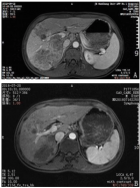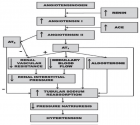Table of Contents
Idiopathic parkinson’s disease and fatigue
Published on: 10th May, 2022
Introduction: Fatigue is a common non-motor symptom of Idiopathic Parkinson’s Disease (IPD). The aim is to research the relationship between fatigue of IPD patients and the clinical findings, of mood disorders.Material and methods: A total of 39 patients with IPD were included in the study. The relationship between fatigue severity and demographic characteristics and the treatment was evaluated in IPD. The severity of fatigue was evaluated by Fatigue Severity Scale (FSS). Motor impairment was scored by the modified Hoehn and Yahr scale. The patients were assessed for the presence of depression and anxiety with the Hospital Anxiety and Depression Scale (HADS). Results: The mean age of the patients was 70.62 ± 8.35 years. 23 were men and 16 were women. The mean disease duration was 6.18 ± 3.35 years. The patients were assigned into two groups according to the presence of fatigue measured by FSS with less than 5 (Group I) and 5 or more (Group II). There were no statistically significant differences between the two groups with respect to mean age, mean age of onset, and mean disease duration of the patients (p > 0.05). There were no significant differences between the two groups for HADS depression, anxiety values, and terms of antiparkinsonian therapies (p > 0.05). The severity of fatigue was correlated with the HADS anxiety levels (p < 0.05).Discussion: Fatigue is an important non-motor symptom that is underestimated in clinical follow-up. We didn’t find any correlation between fatigue and age, duration of disease onset, or drug use. There was no significant correlation between the fatigue score and depression, and pain. However, the fatigue scores were higher in patients with high anxiety scores and females.
Intrasellar psammomatous meningioma: a case report and review of the literature
Published on: 18th January, 2022
OCLC Number/Unique Identifier: 9396189210
Intrasellar meningioma (IM) is a rare occurrence that is difficult to distinguish preoperatively from the most common non-functioning pituitary adenoma. Here we describe a case of psammomatous IM occurring in a 68-year-old woman, presented with visual defects. On magnetic resonance imaging (MRI) she was found to have an intrasellar mass with suprasellar extension that was approached with transsphenoidal surgery. Subtle radiological hints, namely dural tail sign, intralesional calcifications and a marked and homogenous early enhancement of IM on MRI after gadolinium administration, may aid clinicians in achieving an accurate pre-operative diagnosis and choosing the proper surgical approach. The clinical and neuroradiological features of IM described in the literature has been reviewed.
Neurotoxicity related exposure to ambient nanoparticles
Published on: 18th January, 2022
OCLC Number/Unique Identifier: 9396207094
Air pollution exposure is among the most prevalent reasons for environmentally-induced oxidative stress and inflammation, both of which are implicated in the central nervous system (CNS) diseases. The CNS has emerged as an important target for adverse health effects of exposure to air pollutants, where it can cause neurological and neurodevelopmental disorders. Air pollution includes various components of gases, particulate matter (PM), ultrafine particulate (UFPs), metals, and organic compounds. An important source of PM and UFPM in the ambient air is associated with air pollution-related trafficking, and primarily diesel exhaust particles (DEPs). Controlled animal studies and epidemiological studies show that exposure to air pollution, and in particular urban air pollution or DEPs, may lead to neurotoxicity. In specific, exposure to air pollutants as an important factor may be in neurodevelopmental disorders (eg Autism) and neurological disorders (eg.., Alzheimer’s Disease (AD)). The most noticeable effects of exposure to air pollutants in animals and humans are oxidative stress and neurodegeneration. Studies in rats exposed to DEPs showed microglial activity, increased lipid peroxidation, and neuronal accumulation in various areas of the brain, especially the olfactory bulb (OB) and the hippocampus (HI). Disorders of adult neurogenesis were also found. In most cases, the effects of DEP are more pronounced in male mice, probably due to lower antioxidant capacity due to less expression of paraoxonase 2.
Pediatric brainstem glioma
Published on: 3rd January, 2022
OCLC Number/Unique Identifier: 9396216057
Background and objectives: Brainstem gliomas are tumors of the central nervous system which have varying presentations and clinical courses. This study aims to analyze the frequency, clinical and therapeutic aspects of brainstem glioma.Methods: We retrospectively analyzed the data from the record of the patients treated for brainstem glioma under the age of 20 between January 2007 and July 2020 in the Radiation Oncology department of the Ibn Rochd UHC.Results: There were fifteen patients (10 males and 5 females). The mean age of onset was 12 years (range 8 - 14 years). The duration of symptoms varied from 1 month to 2 years. Nine of the patients had intracranial hypertension due to hydrocephalus, six had cranial nerve deficits at presentation, and five patients had cerebellar signs. The lesion was pontine in 12 cases. None of the patients had a tumoral resection, nine had a ventriculo-peritoneal shunt insertion for the hydrocephalus and three had a Stereotactic biopsy that revealed one astrocytoma grade 1, one low grade glioma and one glioblastoma. The radiotherapy was indicated in all the cases but only nine patients had a 3D radiotherapy with a total dose of 54 Gy. Three patients received chemotherapy. Six patients are still alive, two are lost to follow up and seven patients are dead with a mean survival period of 8 months.Conclusion: Brainstem glioma is a devastating disease with a bad prognosis. The clinical presentation is variable and the management is multidisciplinary. Our study illustrates the importance of treatment by radiation.

If you are already a member of our network and need to keep track of any developments regarding a question you have already submitted, click "take me to my Query."



















































































































































